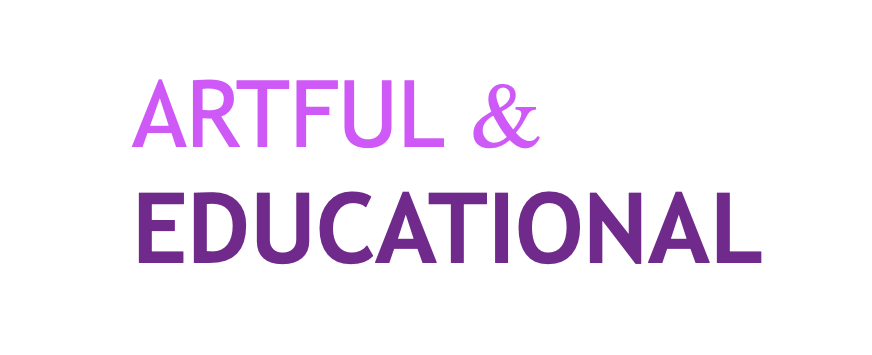Studio Art Feedback Guide
When giving feedback to students of any age during work time, focus on the actions they are taking, rather than the results their actions have produced. Use this info-packed reference guide next time you are giving feedback to your students.
Most of the time, especially with younger groups, we are giving in-progress feedback while students work, instead of having formal critiques after a project is completed. Our feedback should always focus on actions taken because the students can then focus on process and technique, while following their interests, instead of the teacher imposing their own values about what is ‘beautiful’ or ‘interesting.’ Be mindful when using these words in the classroom. We want our students to understand exactly what we are responding to in an artwork, so it helps to be as specific as possible.
My Studio Art Feedback resource consists of two charts (one for early childhood and one for older children, teens and adults). Each chart contains two columns -- Observation and Praise and Suggestions for Improvement. When you find yourself about to describe a work of art as ‘beautiful’ or ‘interesting,’ consult these charts to see if there are other adjectives that more accurately describe what you are trying to say, in a way that is more specific and helpful for students!
Print this out and laminate it so you always have it on hand, and leave a copy on your desk for your substitute teacher! This brief guide will surely become your new companion in the classroom.
When giving feedback to students of any age during work time, focus on the actions they are taking, rather than the results their actions have produced. Use this info-packed reference guide next time you are giving feedback to your students.
Most of the time, especially with younger groups, we are giving in-progress feedback while students work, instead of having formal critiques after a project is completed. Our feedback should always focus on actions taken because the students can then focus on process and technique, while following their interests, instead of the teacher imposing their own values about what is ‘beautiful’ or ‘interesting.’ Be mindful when using these words in the classroom. We want our students to understand exactly what we are responding to in an artwork, so it helps to be as specific as possible.
My Studio Art Feedback resource consists of two charts (one for early childhood and one for older children, teens and adults). Each chart contains two columns -- Observation and Praise and Suggestions for Improvement. When you find yourself about to describe a work of art as ‘beautiful’ or ‘interesting,’ consult these charts to see if there are other adjectives that more accurately describe what you are trying to say, in a way that is more specific and helpful for students!
Print this out and laminate it so you always have it on hand, and leave a copy on your desk for your substitute teacher! This brief guide will surely become your new companion in the classroom.
When giving feedback to students of any age during work time, focus on the actions they are taking, rather than the results their actions have produced. Use this info-packed reference guide next time you are giving feedback to your students.
Most of the time, especially with younger groups, we are giving in-progress feedback while students work, instead of having formal critiques after a project is completed. Our feedback should always focus on actions taken because the students can then focus on process and technique, while following their interests, instead of the teacher imposing their own values about what is ‘beautiful’ or ‘interesting.’ Be mindful when using these words in the classroom. We want our students to understand exactly what we are responding to in an artwork, so it helps to be as specific as possible.
My Studio Art Feedback resource consists of two charts (one for early childhood and one for older children, teens and adults). Each chart contains two columns -- Observation and Praise and Suggestions for Improvement. When you find yourself about to describe a work of art as ‘beautiful’ or ‘interesting,’ consult these charts to see if there are other adjectives that more accurately describe what you are trying to say, in a way that is more specific and helpful for students!
Print this out and laminate it so you always have it on hand, and leave a copy on your desk for your substitute teacher! This brief guide will surely become your new companion in the classroom.



